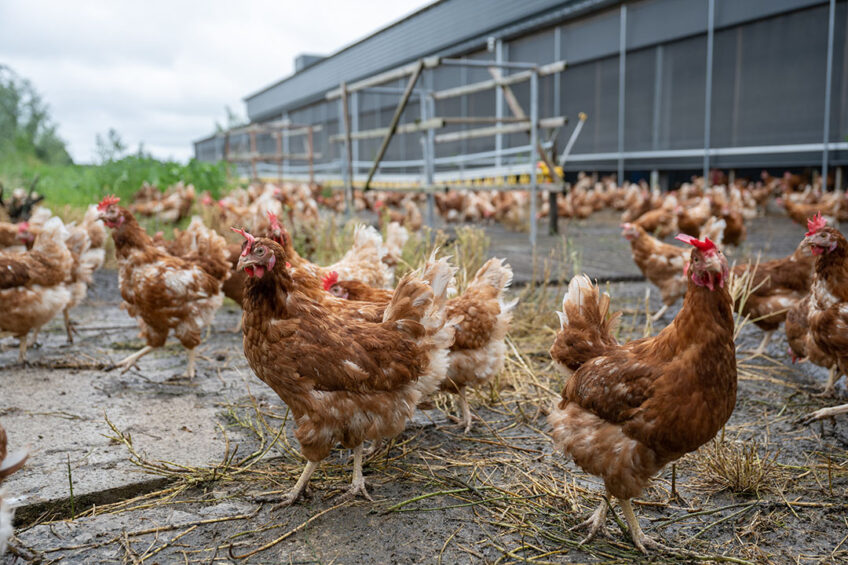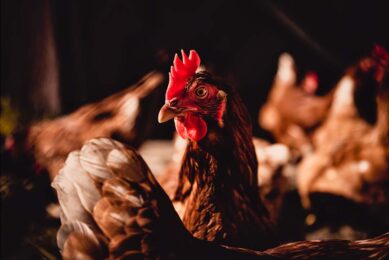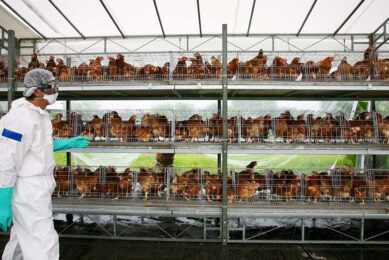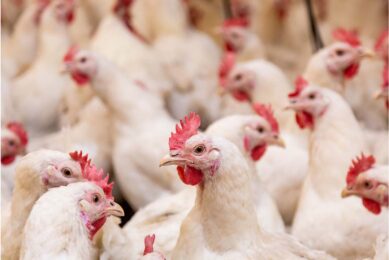Disease control challenges of non-notifiable LPAI

Excellent communication and teamwork between the government, industry and private vets minimise the potentially devastating effect of last year’s avian influenza (AI) in Northern Ireland.
Vet Dana Simpson, St David’s Poultry Team, spoke of the disease control challenge of non-notifiable low pathogenic avian influenza (LPAI) in last year’s outbreak – the first time the disease had been confirmed in a commercial flock for 34 years in the country.
Simpson said that although the strain was found to be H6N1 low pathogenic, it caused significant morbidity, mortality and falls in production with a total of 15 commercial sites and 5 different companies confirmed positive.
Hot LPAI strain
Speaking at a joint poultry industry/government workshop, she said as soon as AI was suspected, the competent authority – Department of Agriculture, Environment and Rural Affairs (DAERA) was notified and restrictions were applied to the flock premises with cessation of all movements. Samples were collected and tested but once the strain was found to be low pathogenic it was up to industry to manage the quarantine of the flock and prevent its spread.
Depletions were not enforced by the government. She said both commercial layer units (caged and free-range systems) and broiler breeder units were affected. There were variations in spread through different housing systems and in clinical manifestations and also in the bird’s recovery time. Among the veterinary findings in the commercial layer unit were:
• Loose droppings (green tinge)
• Subdued behaviour
• Sick birds
• Increased number of seconds (weak shells, pale shells, jelly eggs)
• Increased mortality
• Severe (up to 90%) drop in mortality.
Birds in the affected broiler breeder units showed different findings:
• Sudden spike in mortality (often initially in roosters)
• Congested heads and wattles shortly after death
• Swollen eyelids and redness around the eyes
• Fever
• Drop in feed intake
• Production cessation
• Mortality of up to 5-6% per day
European poultry projects to take share of research funding
Scientists from 5 European countries have been awarded funding to look at potential virulent non-notifiable avian influenza strains. Read more…
Sizable costs
Simpson said the costs to companies of the outbreak was huge as the transport of equipment, gas canisters and catching teams, often from across the Irish Sea, was sizeable. The review found that there was viral spread through contaminated material (feathers, dust and litter) during on-farm depletion and the issue was not helped by windy weather: “A large number of farms were affected; it affected the whole industry – export, egg numbers, broiler numbers, restocking, stand down of personnel involved.”
Commenting on the lessons learned, she highlighted:
• Different AI strains can have different clinical presentations in different bird species and types
• During the migratory period AI should always be considered a possibility
• Some LPAI strains can clinically present as a highly pathogenic avian influenza
• Inter-farm movements of people, litter and equipment are a high risk factor in the potential spread of AI
• Whole house gassing and the retention of litter on sites for a minimum of 60 days appeared to significantly reduce the spread of AI
• Communication and cooperation between stakeholders are paramount.
Join 31,000+ subscribers
Subscribe to our newsletter to stay updated about all the need-to-know content in the poultry sector, three times a week. Beheer
Beheer








 WP Admin
WP Admin  Bewerk bericht
Bewerk bericht